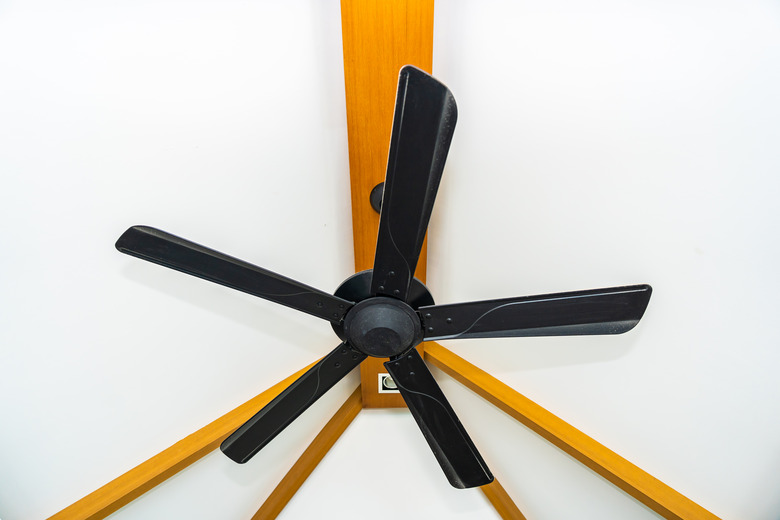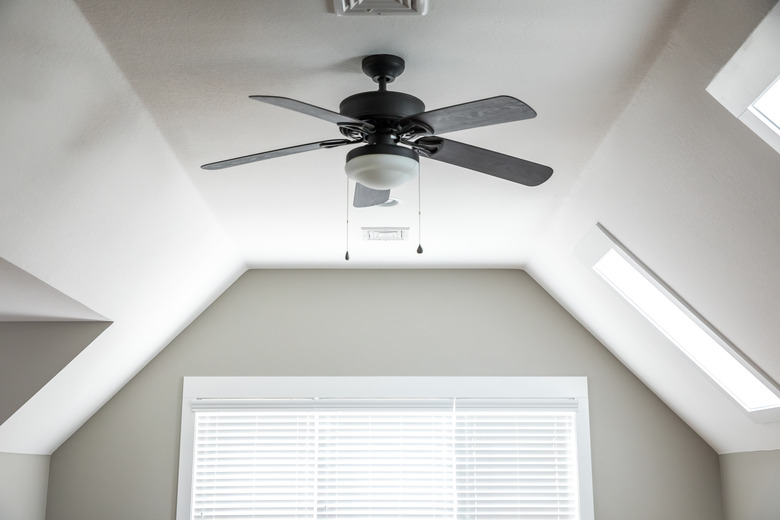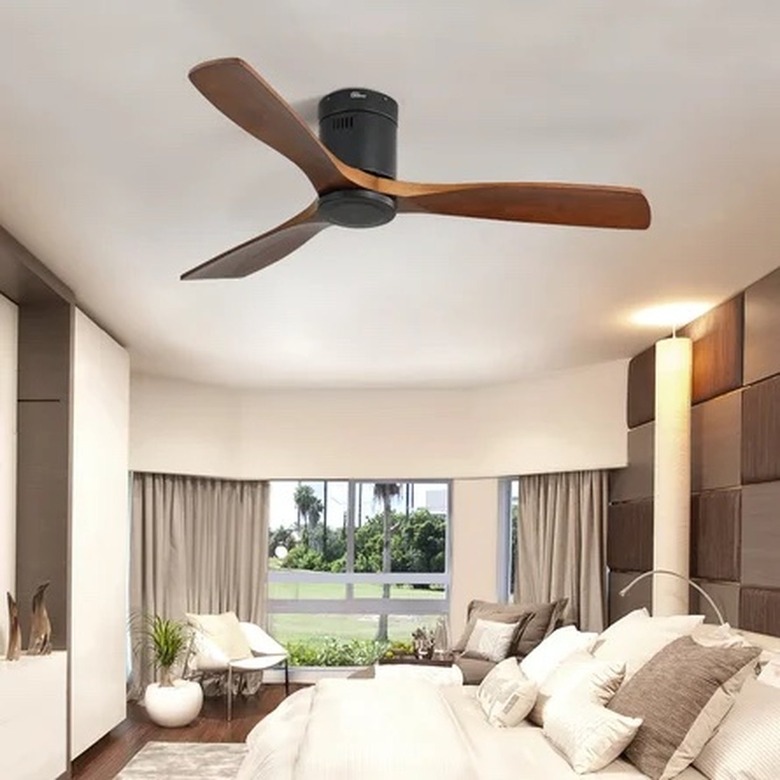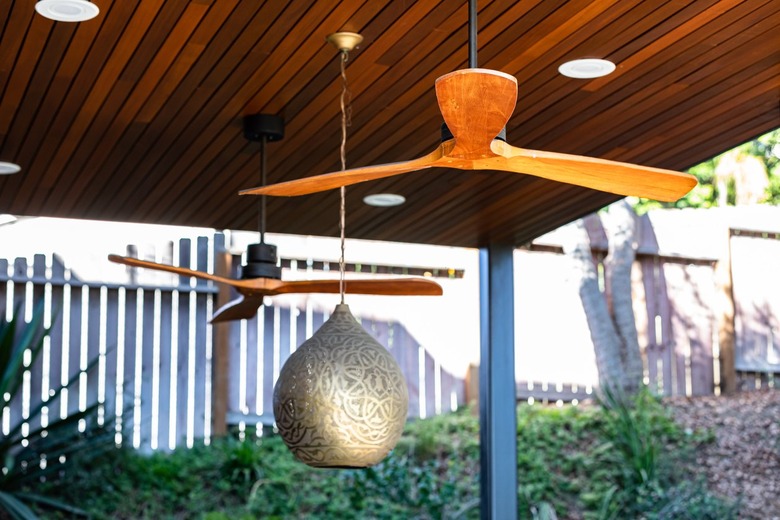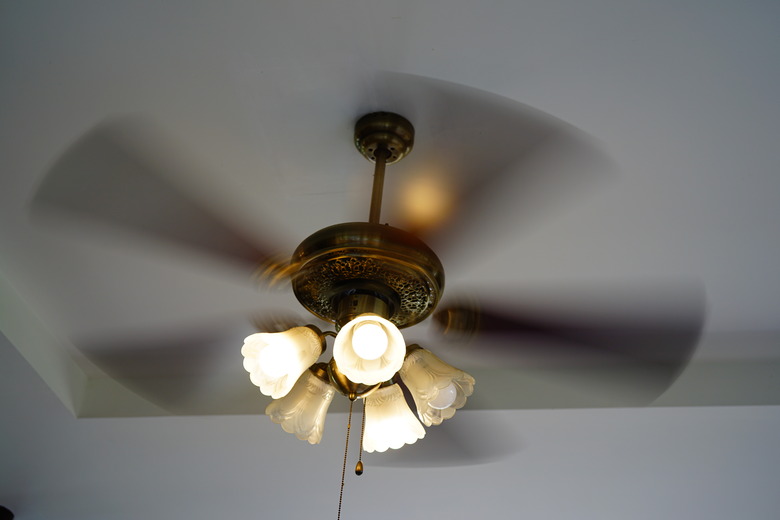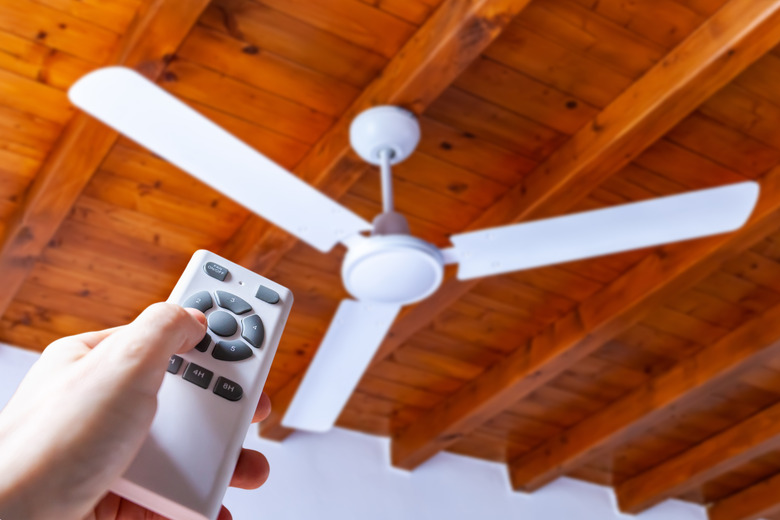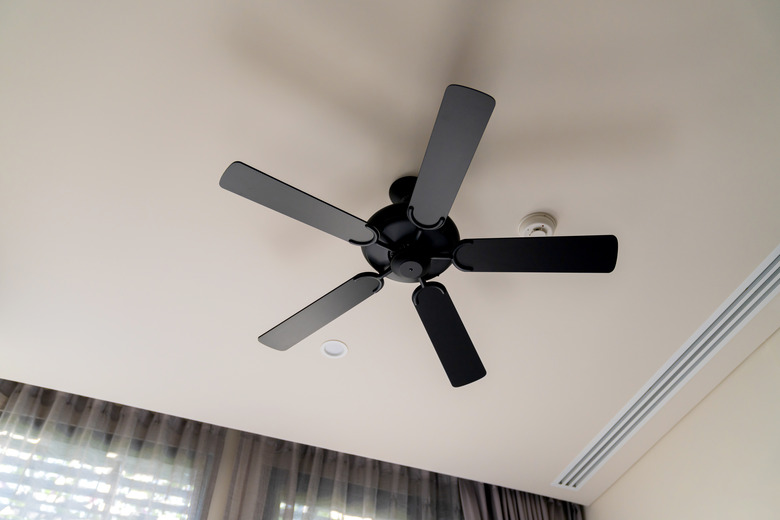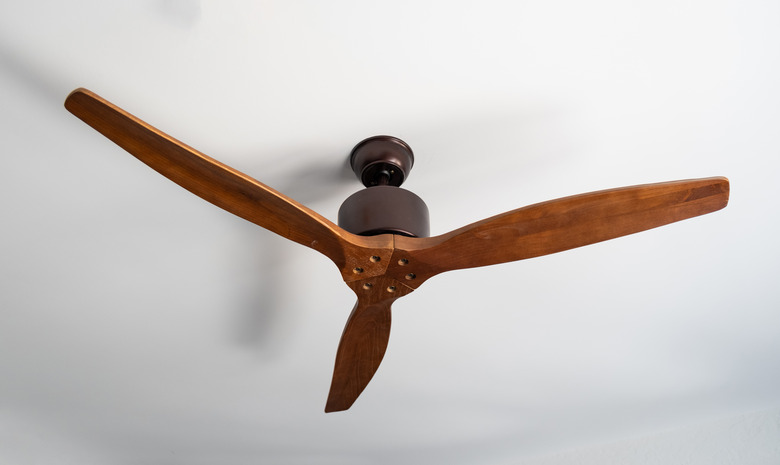10 Types Of Ceiling Fans For Every Room In The House
We may receive a commission on purchases made from links.
Ceiling fans might seem similar from a distance, but look closer and you'll see that they have different functions and ideal uses. While all ceiling fans offer cooling breezes and air movement, they often have small (and sometimes big) differences that can impact how well they work in a given space. To help you choose the best fixtures for your home, we've rounded up 10 different types of ceiling fans.
1. Standard Ceiling Fans
1. Standard Ceiling Fans
Standard ceiling fans have the classic design you're used to seeing, with a downrod extending from the ceiling to the motor housing of the fan. They typically have four or five fan blades, but the number can vary. You can find them in different ceiling fan sizes based on the size of the blades.
They might be called standard, but these fans come in a variety of styles and finishes, from brushed nickel to antique bronze, to blend with your decor. Standard ceiling fans are ideal for rooms with a ceiling height of 8 feet or more. For a room with a sloped ceiling, you'll need a standard ceiling fan with an angled ceiling adapter to hang the ceiling fan correctly.
The ideal height for a ceiling fan is about 8 to 9 feet above the floor, but it should sit at least 7 feet above the floor for safety. If you have extra-high ceilings, you can get longer downrods to bring the motor housing and fan blades closer to the floor, making the fan more effective. General guidelines for different ceiling heights include the following. (The body of the fan adds about 8 to 12 inches to the overall length.)
- 10-foot ceiling: 12-inch downrod
- 11-foot ceiling: 18-inch downrod
- 12-foot ceiling: 24-inch downrod
- 13-foot ceiling: 36-inch downrod
- 14-foot ceiling: 48-inch downrod
- 15-foot ceiling: 60-inch downrod
- 16-foot ceiling: 72-inch downrod
For higher ceilings, using a professional for the ceiling fan installation can ensure you get the correct downrod length and a secure installation.
2. Low-Profile Ceiling Fans
2. Low-Profile Ceiling Fans
Low-profile, flush-mount, and hugger ceiling fans are all different names for fans that eliminate the downrod. Instead, the motor housing is mounted directly to the ceiling with a mounting bracket, positioning it closer to the ceiling. These flush-mount ceiling fans allow for more clearance in a room with low ceilings, and they're less obvious since they don't hang down into the room as much as standard ceiling fans. Other than the different mounting style, they look like other ceiling fans, and there are various styles, finishes, and sizes available.
With the blades so close to the ceiling, this type of ceiling fan can't produce quite as much airflow as standard ceiling fans. They're not ideal for high ceilings where you'll need greater air circulation; they're usually only recommended for rooms with a ceiling height under 8 feet. You can optimize airflow by choosing the correct blade size based on the square footage of the room.
3. Outdoor Ceiling Fans
3. Outdoor Ceiling Fans
A front porch or covered deck area is the perfect place to enjoy fresh air, but it can also get stuffy on hot days with no breeze. Outdoor ceiling fans can help cool those outdoor spaces and keep the bugs away. They look similar to the indoor versions but have protection against moisture. You can find them in any style, from traditional to modern, to fit your home's architectural style. Outdoor ceiling fans also come with lights if you want to brighten your outdoor space at night.
You can't use just any ceiling fan for an outdoor space. An indoor ceiling fan isn't rated for weather elements. Instead, you need outdoor fans that can handle the moisture. You'll want either a damp-rated or wet-rated ceiling fan for outdoor use. These fans use weather-resistant materials with protective finishes for the fan blades and have sealed motor housings to keep moisture away from the mechanical parts.
Wet-rated ceiling fans offer the most protection against the elements since they are waterproof. This option is necessary if the ceiling fan will come into direct contact with rain, snow, sleet, or other forms of moisture. Damp-rated ceiling fans aren't designed for direct moisture contact. They're better for outdoor spaces where the rain or snow can't reach them, such as a screened porch.
4. Lighted Ceiling Fans
4. Lighted Ceiling Fans
Most types of ceiling fans are available with or without light kits. A fan with a light kit can add another ceiling light to the room for brighter illumination or can serve as the only light source. They can be especially helpful in small rooms, such as bedrooms, that don't have another ceiling fixture in them. Many ceiling fan light kits come with LED lights because they are energy efficient and can handle the vibrations of ceiling fans.
The different types of lights that are available on various fans include:
- Uplight lighting kits that sit above the blades and direct light toward the ceiling for ambiance.
- Downlight kits that sit below the fan blades and motor housing to direct the illumination down into the room, making it more functional.
You can also choose between bowl-style lighting with a cover over the light or multiple individual lights with separate shades.
5. Remote Control Ceiling Fans
5. Remote Control Ceiling Fans
Ceiling fans have different control options, with the most basic being a pull chain that hangs down from the motor to change the fan speed or turn the fan off and on. Reversible fans have either a switch or a second pull chain to change the direction of the blade rotation. Many ceiling fans also connect to a light switch that you can use to turn them off and on.
If you want a little more convenience, you can upgrade to a fan with a remote control. It allows you to change the fan speed or turn it on and off without moving from your seat to reach the pull chain or wall control. Remote control ceiling fans can be particularly beneficial if you have limited mobility or can't reach the pull chain easily. They're also a necessity in a room with a tall ceiling where the ceiling fan is out of reach. However, everyone can appreciate the convenience of adjusting the fan without getting up from a comfy spot.
6. Smart Ceiling Fans
6. Smart Ceiling Fans
Take the convenience factor another step with a smart ceiling fan. They're similar to a remote control option, but you have more options for interacting with the fan and a greater range from which to control it.
Smart fans work with other smart home elements for easier control, whether you're home or away. They connect to a phone app, which lets you control and adjust the fan from anywhere. Many smart fans also connect to home-assistant devices, such as Amazon Alexa or Google Assistant, so you can control the fan with voice commands.
Many models also incorporate temperature sensors so that the fan turns on and off automatically depending on how cool or warm it is. Others have occupancy sensors so they only turn on when you're home or when someone is in the room. You can usually set specific schedules as well if you know when you want the ceiling fan to run.
7. Multihead Ceiling Fans
7. Multihead Ceiling Fans
A standard ceiling fan has one body and a set of large blades arranged in a circle. But if you prefer a little more pizzazz with a modern style, you can get multihead ceiling fans with two or more individual fans. They're similar to a floor or wall fan except they're mounted to the ceiling. Each fan typically points in a different direction, and sometimes they swivel so you can adjust their direction to some degree.
Most people choose a multihead ceiling fan when they want a unique look in a room, which makes them ideal for a living room or other common areas. The adjustability is also a benefit. You can position each fan where you want it and control the speed settings separately if desired. Plus, the airflow often goes farther in the room with its angled or horizontal airflow compared to a traditional fan that directs air down to the floor.
9. Energy-Efficient Ceiling Fans
9. Energy-Efficient Ceiling Fans
If you're trying to reduce your energy consumption, something else you might want to consider is an energy-efficient ceiling fan. If you choose an Energy-Star-certified ceiling fan, you'll get one that's 60 percent more efficient than conventional units. To qualify, the fan has to meet strict criteria that's verified by accredited labs.
These energy-efficient fans use optimal design features, like aerodynamic fan blades, so they move more efficiently. If you choose a lighted Energy Star fan, it'll likely have an LED light on it to improve the fixture's energy efficiency.
You can find Energy Star ceiling fans in all types and styles, including both standard and low-profile models. Because of this variety, they're ideal for any room, especially if you're making efforts to cut your utility bills.
10. DC Motor Ceiling Fans
10. DC Motor Ceiling Fans
Most ceiling fans have motors wired for AC power, but you can get models with a direct current or DC motor, which offers several benefits, including:
- Reduced energy use: One major perk is lower energy consumption from a DC ceiling fan, which can save money on your utility bills.
- Quieter operation: You'll likely notice your room is quieter since DC fans tend to create less noise, making them ideal in your bedroom when you want a quiet night's sleep.
- Smaller: They also tend to have smaller motors, which makes the ceiling fan more compact and lighter than AC fans.
- More speeds: The DC motor makes it possible to have more speed options, sometimes with six or more speed settings on the fan to help you customize the airflow.
You'll usually pay more for a DC fan than an AC fan, so your budget could be a factor if you're considering a DC fan.
